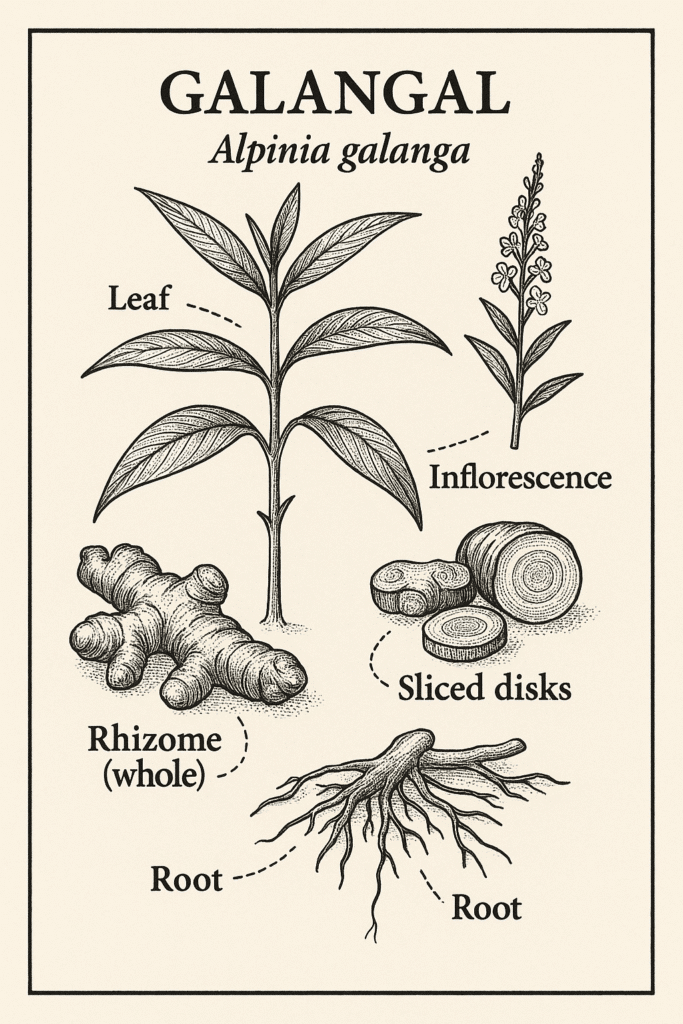Galangal
Alpinia galanga (L.) Willd. — Materia Medica

Snapshot
A warming Zingiberaceae rhizome rich in phenylpropanoids and diarylheptanoids (e.g., 1′-acetoxychavicol acetate) with carminative, antimicrobial, and anti-inflammatory activity; used traditionally to settle nausea, support digestion, and ease upper-respiratory congestion.Alpinia galanga (Galangal) is a warming, aromatic rhizome in the ginger family. In Southeast Asian medicine and cuisine it’s used to settle queasy stomachs, kindle appetite, and cut through sluggish, gassy digestion. The spicy-citrus aroma comes from phenylpropanoids such as 1′-acetoxychavicol acetate, which also show antimicrobial and anti-inflammatory activity in modern studies. Herbalists reach for galangal as a carminative and digestive tonic, and sometimes in respiratory blends as a gentle, warming expectorant. Culinary amounts are considered safe (U.S. GRAS status); for concentrated extracts, use care with very sensitive digestion and stick to food-like doses in pregnancy unless advised otherwise.
Identification & Harvest
Perennial herb (Zingiberaceae); harvest mature rhizomes after 10–12 months. Distinguish greater galangal (A. galanga) from lesser galangal (A. officinarum)—both aromatic but distinct species. Dry promptly to prevent mold; store airtight.Preparations
- tea-infusion
- decoction
- tincture
- powder
- syrup
- capsule
Safety
Generally recognized as safe as a food spice (U.S. 21 CFR § 182). Culinary amounts are well-tolerated; concentrated extracts may irritate sensitive GI mucosa. Limited data in pregnancy—use culinary amounts only unless advised by a clinician. No well-documented drug interactions at dietary intakes.Related Research
No studies yet.
References
- Kew Science — Plants of the World Online: Alpinia galanga (L.) Willd. (taxonomy, distribution).
- (2020) Galangal, the multipotent super spices (phytochemistry & pharmacology overview; includes A. galanga).
- Galangal: Cultivation, uses, and safety notes (overview entry)
- Galangal listed among substances generally recognized as safe (21 CFR § 182.10 / § 182.20).
- Alpinia galanga (L.) Willd: Plant Morphological and Pharmacological (summary incl. 1′-acetoxychavicol acetate)
Educational content only; not medical advice.
